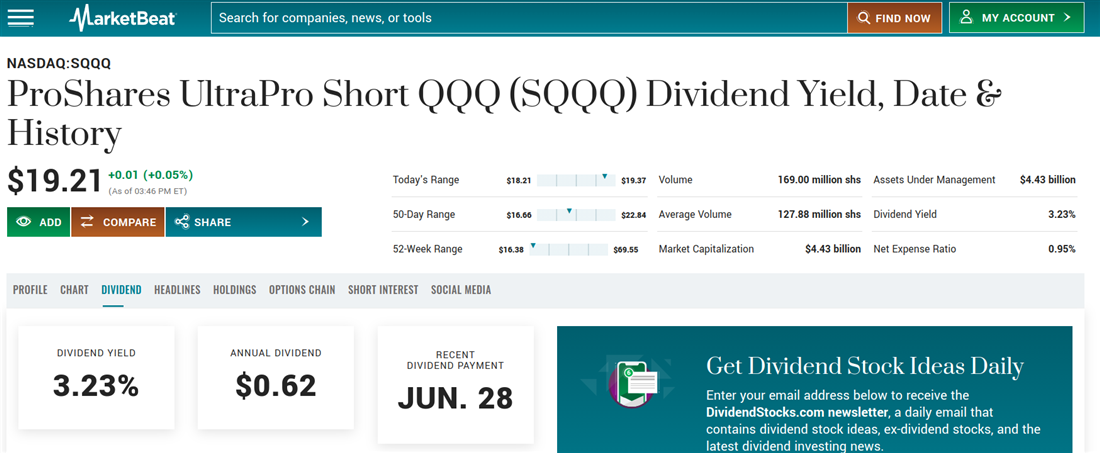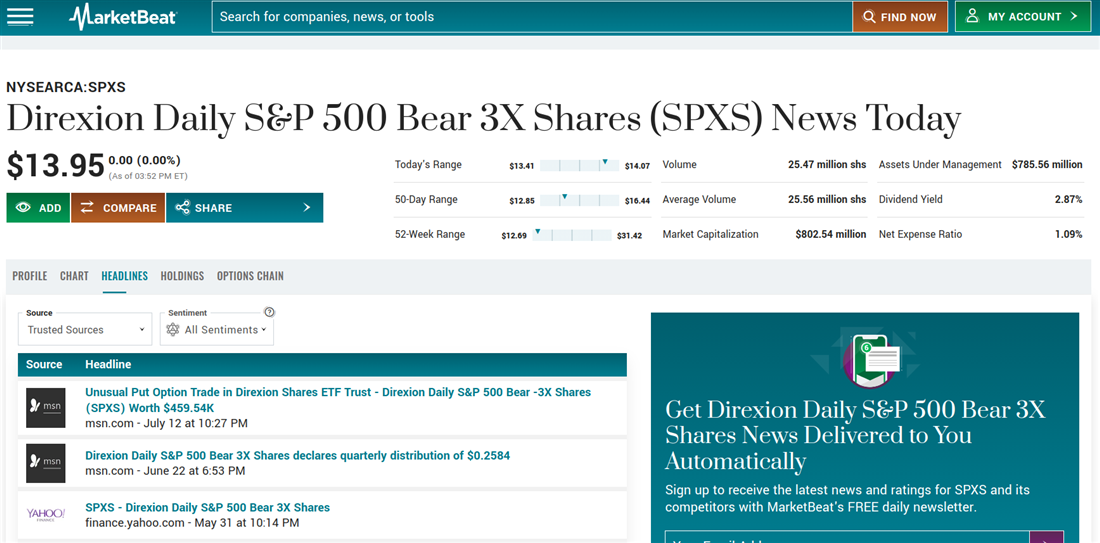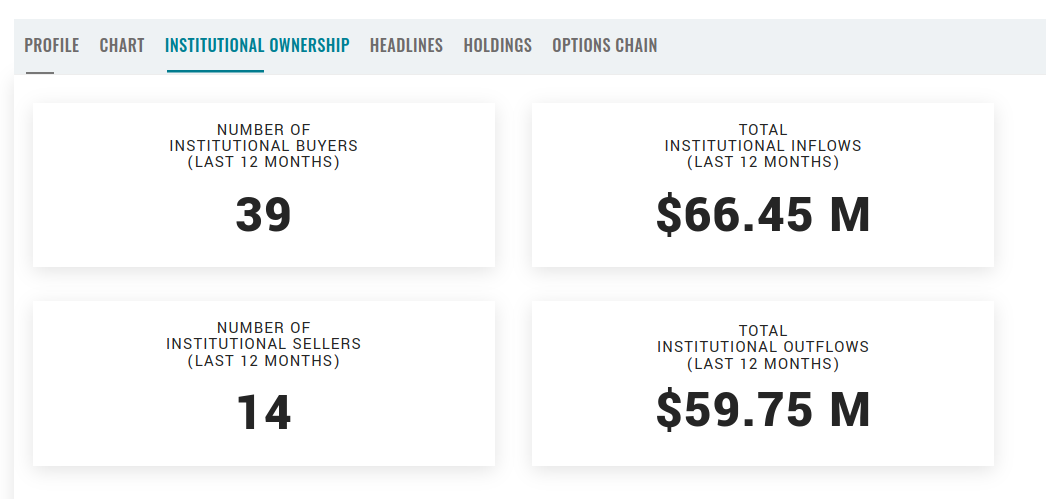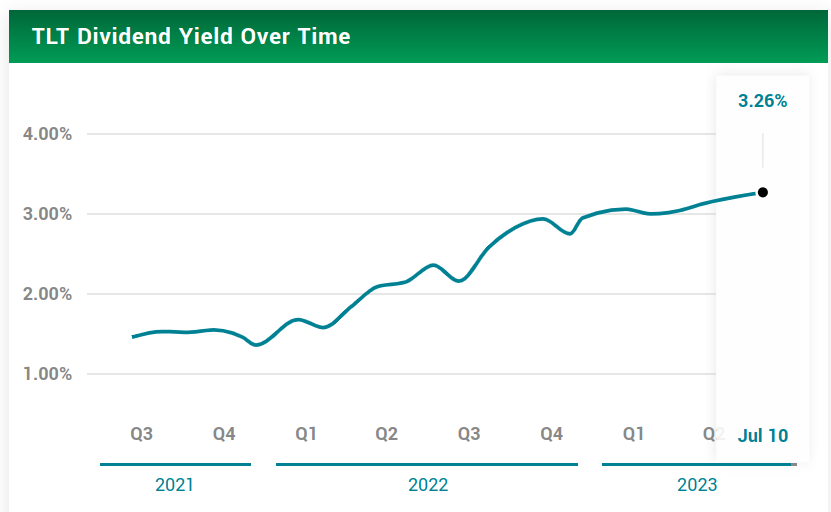
During unprecedented times in financial markets, the term "bear market" can strike fear into even the most seasoned investor's heart. As economic tides come and go, the need for strategic planning becomes paramount, and that's where bear market ETFs come into play.
These financial instruments could be the key to weathering market downturns with finesse. Imagine having a tailored financial tool that shields your investments during challenging times and provides opportunities for potential growth. But with so many options available, ranging from bear ETFs to defensive stock ETFs, finding the best bear market ETF can feel like navigating a labyrinth.
Which ETF to buy in a bear market? Discover the power of bear market ETFs and arm yourself with the tools to survive and thrive if the market tides turn.
Overview of Bear Market ETFs
Navigating the waters of the financial market requires more than just luck — it demands strategy, insight and the right tools at your disposal. Bear market ETFs can offer compelling ways to safeguard your investments during challenging times.
Imagine you are in a market downturn, where red dominates your trading screens, and uncertainty looms. The best inverse ETFs for bear markets act as your financial shield, designed to move in the opposite direction of the declining market. These ETFs capitalize on the market's decline by increasing in value, helping to offset potential losses in your portfolio. Their ability to generate gains while the market is down is a distinctive trait that every investor should consider. Having the right tools is paramount as the market declines into a bear market. An ETF for bear market conditions is engineered to thrive when traditional investments falter.
It's like having a lifeboat when others are left treading water. You might wonder which ETF to buy in a bear market, but the answer is not one-size-fits-all. Factors such as your risk tolerance, investment goals and market outlook are pivotal in determining your ideal choice.
Exploring the bear ETF list is like browsing a catalog of possibilities. Each ETF has its unique strategy, composition and risk profile. You might encounter defensive stock ETFs designed to include companies less susceptible to market volatility. So, what is the best defense stock ETF?
This is where research and understanding your investment preferences become essential. Identifying the best ETFs for bear market conditions involves considering performance history, expense ratios and aligning the ETF's strategy with your investment objectives. The best bear funds can offer a well-rounded approach, spreading risk across a diversified portfolio.
Why Invest in Bear Market ETFs?
Investing in exchange-traded funds during a bear market can be a strategic approach for some investors. While market downturns may lead to lower asset prices, ETFs offer diversified exposure to various assets and sectors. This diversification can help mitigate the impact of market volatility, allowing you to reduce risk and capture opportunities from undervalued assets.
When investigating which ETF to buy in bear market conditions, it is important to underscore why these instruments warrant consideration within a well-rounded investment strategy.
Bear market ETFs serve as a defensive buffer against market volatility. These instruments are structured to perform effectively in declining markets, potentially alleviating the negative impacts of market downturns on a portfolio. Incorporating bear market ETFs can offer a more resilient posture during heightened market uncertainty.
Unlike conventional ETFs that mirror market indices, bear market ETFs are tailored to align with the dynamics specific to bearish conditions. This deliberate alignment allows them to capture opportunities within the context of declining markets, potentially leading to more favorable outcomes when compared to standard investment options.
Selecting a suitable bear market, ETF hinges on your individual objectives, risk tolerance and investment horizon. Evaluating the optimal strategy among bear market ETFs involves assessing the desired degree of short-term protection or long-term defensive positioning. This personalized approach ensures that the chosen ETF complements your financial goals.
An often overlooked feature of bear market ETFs is their potential to generate positive returns in periods of market decline. By capitalizing on market downturns, these ETFs can present a unique avenue for gains, while traditional investments may face headwinds. This potential upside contributes to the diversification and balance of an investment portfolio.
Bear market ETFs contribute to portfolio diversification by incorporating alternative strategies and asset classes. This diversification strategy enhances risk management by reducing the potential impact of losses from a single asset class. As a result, the inclusion of bear market ETFs can contribute to a more resilient investment approach.
7 Best Bear Market ETFs to Buy Now
In a market climate where uncertainty can make or break portfolios, the significance of strategic decision-making is undeniable. Now that you understand what a bear market is and how bear market ETFs fit into the picture, let's look at a curated list of ETFs to discover how they might benefit your portfolio.
These ETFs represent a distinct approach to navigating bearish conditions, honed by their unique strategies, historical performance and risk profiles. As you continue your quest for stability and growth in the face of market challenges, we'll look at key attributes, performance history and the strategic considerations that render them effective tools for navigating bear markets. Each profile provides the insights needed to make informed investment decisions, empowering you to survive and thrive amid market downturns.
|
Name |
Symbol |
AUM |
Expense ratio |
|
ProShares Short S&P 500 ETF |
NYSEARCA: SH |
$1.6 billion |
0.88% |
|
ProShares UltraPro Short QQQ ETF |
$4.4 billion |
0.95% |
|
|
Direxion Daily S&P 500 Bear 3X Shares ETF |
NYSEARCA: SPXS |
$785 million |
1.09% |
|
Direxion Daily Small Cap Bear 3X Shares ETF |
NYSEARCA: TZA |
$569 million |
1.00% |
|
iShares 20+ Year Treasury Bond ETF |
$40.2 billion |
0.15% |
|
|
SPDR Gold Trust ETF |
NYSEARCA: GLD |
$55.8 billion |
0.40% |
|
Vanguard Total Bond Market ETF |
$95.1 billion |
0.03% |
1. ProShares Short S&P 500 ETF
The ProShares Short S&P 500 ETF (NYSEARCA: SH) is a specialized financial instrument with the primary goal of providing you with inverse daily returns relative to the performance of the S&P 500 Index. As a leveraged ETF, ProShares Short S&P 500 ETF is designed to amplify gains or losses, aiming to protect your portfolio during market downturns.
The ProShares Short S&P 500 ETF seeks to achieve its objective by tracking the inverse (opposite) performance of the S&P 500 Index, a benchmark measuring large-cap U.S. stocks' performance. When the S&P 500 Index declines by a certain percentage, ProShares Short S&P 500 ETF aims to generate positive returns of an equivalent magnitude. The ProShares Short S&P 500 ETF holdings reveal that it is a defensive strategy against market declines, allowing you to benefit from the inverse relationship between SH's returns and the market's losses.
The ProShares Short S&P 500 ETF expense ratio is 0.88%, reflecting the fee investors pay for fund management. While this expense ratio is a factor to consider, weigh the potential benefits of inverse returns against this fee. ProShares Short S&P 500 ETF typically does not distribute dividends to its shareholders due to its focus on generating returns through inverse performance.
Being a leveraged ETF, ProShares Short S&P 500 ETF utilizes borrowed funds to amplify returns. While this can be advantageous in a declining market, it can also lead to magnified losses if the market moves in the opposite direction. Tracking error, or the deviation between actual and intended returns, should be considered when evaluating the ETF's performance consistency. We chose it for our list due to its specialized strategy of delivering inverse returns during market declines. This unique feature can give you a defensive tool to hedge against potential losses. ProShares Short S&P 500 ETF’s extensive track record and liquidity further enhance its appeal as a component of a diversified portfolio.
 2. ProShares UltraPro Short QQQ ETF
2. ProShares UltraPro Short QQQ ETF
The ProShares UltraPro Short QQQ ETF (NASDAQ: SQQQ) is an exchange-traded fund designed to deliver three times the inverse daily return of the Nasdaq 100 Index. For each 1% decline in the Nasdaq index, the ETF aims to generate a 3% increase in value. As a leveraged ETF, its purpose is to amplify gains or losses, providing a potential tool for benefiting from market downturns.
The ProShares UltraPro Short QQQ ETF has a structure optimized for enhanced returns during negative Nasdaq 100 periods, catering to investors expecting short-term market volatility or seeking portfolio hedging against market downturns. Its focus on tech-heavy stocks and its capacity to amplify gains or losses make it a valuable tool if you are aiming to manage risk or leverage market volatility.
By aiming for daily results corresponding to three times the inverse performance of the Nasdaq-100 Index, the ProShares UltraPro Short QQQ ETF provides an avenue to gain from downward movements in the technology-heavy index.
Unlike conventional valuation metrics such as price-to-earnings or price-to-book ratios, this ETF's evaluation involves comparing its performance with the Nasdaq-100 Index and other short or inverse ETFs. ProShares UltraPro Short QQQ ETF dividend yield is another positive aspect of the ETF, providing income-seeking investors an opportunity to generate income.
During heightened market uncertainty or sharp technological stock declines, the ETF tends to experience increased trading volume and potential price appreciation. It's crucial to recognize that the compounding nature of leveraged ETFs like the ProShares UltraPro Short QQQ ETF may lead to unforeseen outcomes over extended holding periods.
3. Direxion Daily S&P 500 Bear 3X Shares ETF
The Direxion Daily S&P 500 Bear 3X Shares ETF (NYSEARCA: SPXS) offers three times the inverse daily return of the S&P 500 Index. When the S&P 500 Index drops by 1%, the ETF strives to rise by 3%. The Direxion Daily S&P 500 Bear 3X Shares ETF goal is to provide daily results that correlate with 300% of the inverse performance of the S&P 500 Index, comprised of 500 domestic common stocks selected for their market values and industry diversification.
The ETF's strategy should capitalize on market downturns, focusing on sectors like information technology, financials, healthcare, consumer discretionary, consumer staples, energy, industrials, utilities, materials and telecommunication services.
The Direxion Daily S&P 500 Bear 3X Shares ETF boasts an expense ratio of 1.09%, encompassing the management fee and other associated costs. Although not the lowest expense ratio around, assessing this cost is pivotal when evaluating the fund's overall performance. This ETF provides a dividend yield of 2.87%, reflecting the portion of the fund's earnings distributed to investors as dividends. This yield could appeal to those in search of investment income. The ETF demonstrates a solid average daily trading volume, suggesting the ETF has good liquidity. The ETF carries a higher risk profile because it focuses on providing three times the inverse daily return of the S&P 500 Index.
Much like other leveraged or inverse ETFs, its performance is susceptible to market volatility and movements in the underlying index. You must continually monitor Direxion Daily S&P 500 Bear 3X Shares ETF news headlines to monitor your risks.

4. Direxion Daily Small Cap Bear 3X Shares ETF
The Direxion Daily Small Cap Bear 3X Shares ETF (NYSEARCA: TZA) holds a unique position in the market as a non-leveraged exchange-traded fund seeking to provide three times the inverse daily return of the Russell 2000 Index.
This distinct strategy means that Direxion Daily Small Cap Bear 3X Shares ETF aims to amplify its gains when the Russell 2000 Index experiences a downturn, making it a potential choice for you during bearish market phases. With its focus on the small-cap stocks within the Russell 2000 Index, which represents approximately 10% of the total market capitalization of the Russell 3000 Index, Direxion Daily Small Cap Bear 3X Shares ETF zeroes in on a specific market segment.
Direxion Daily Small Cap Bear 3X Shares ETF comes with an expense ratio of 1.00%, which is relatively higher than other bear market ETFs. However, evaluate the cost within the fund's overall performance and strategy. With a track record spanning over a decade, Direxion Daily Small Cap Bear 3X Shares ETF has showcased its performance through various market conditions. This longevity can offer valuable insights to potential investors, allowing them to assess the ETF's historical behavior. You can also obtain insight by monitoring Direxion Daily Small Cap Bear 3X Shares ETF institutional ownership any major changes in ownership made by institutional owners should be considered when evaluating risk.
What makes Direxion Daily Small Cap Bear 3X Shares ETF different is its non-leveraged structure. This distinguishes it from other bear market ETFs that utilize leverage to magnify returns. Direxion Daily Small Cap Bear 3X Shares ETF's approach offers inverse exposure without the potential compounding risks associated with leverage. The Direxion Daily Small Cap Bear 3X Shares ETF is a distinctive option if you anticipate declines in the Russell 2000 Index. Its strategic objective of providing three times the inverse daily performance of the index, coupled with its non-leveraged approach, enhances its potential as a tool to navigate bear markets or hedge portfolios. 
5. iShares 20+ Year Treasury Bond ETF
The iShares 20+ Year Treasury Bond ETF (NASDAQ: TLT) investment objective centers around mirroring the performance of the ICE US Treasury 20+ Year Index, which consists of public obligations of the United States Treasury with maturities greater than 20 years.
This ETF is a potential safeguard for your portfolio during bear markets, as Treasury bonds are generally less volatile than stocks. With its emphasis on longer-term U.S. Treasury bonds, the iShares 20+ Year Treasury Bond ETF offers exposure to government debt's stability and income potential. With an expense ratio of 0.15%, iShares 20+ Year Treasury Bond ETF maintains a low-cost structure, allowing you to retain a significant portion of your returns. The dividend track record of the iShares 20+ Year Treasury Bond ETF is strong, with dividends steadily increasing over time.
With a history spanning over two decades, iShares 20+ Year Treasury Bond ETF showcases a substantial track record, offering insights into its behavior across various market conditions. However, it's important to note that iShares 20+ Year Treasury Bond ETF carries its own level of risk. While Treasury bonds are generally considered safer investments, they are still influenced by market dynamics and interest rate changes. Weigh this risk against the potential stability iShares 20+ Year Treasury Bond ETF can offer your portfolio.
One distinctive feature of iShares 20+ Year Treasury Bond ETF is its non-leveraged nature. Unlike some bear market ETFs, iShares 20+ Year Treasury Bond ETF does not use borrowed funds to amplify returns, potentially reducing the associated risks. The iShares 20+ Year Treasury Bond ETF's tracking error is low, indicating that its performance closely aligns with its underlying index, a desirable quality for those seeking accurate index tracking. iShares 20+ Year Treasury Bond ETF's beta metrics underscore its relatively low volatility compared to the stock market, making it a suitable candidate for those aiming to shield their portfolios from bear market downturns.
The iShares 20+ Year Treasury Bond ETF was included on our list because of its capacity to provide a buffer against losses during bear markets, thanks to its emphasis on less volatile Treasury bonds. The iShares 20+ Year Treasury Bond ETF's long track record and strategic focus contribute to its appeal.

6. SPDR Gold Trust ETF
The SPDR Gold Trust ETF (NYSEARCA: GLD) is an investment vehicle designed to mirror the price movements of gold bullion. Gold has long been recognized as a safe-haven asset, sought after during economic uncertainty due to its potential to preserve or enhance its value. SPDR Gold Trust ETF's primary goal is to accurately represent the performance of the price of gold bullion after accounting for the fund's expenses. SPDR Gold Trust ETF boasts a relatively low expense ratio of 0.40%, allowing you to retain a significant portion of your investment gains while benefitting from exposure to gold.
With a track record spanning over a decade, SPDR Gold Trust ETF has demonstrated its performance through various market conditions. Over the past 10 years, SPDR Gold Trust ETF’s holdings have delivered an average annual return of approximately 6%, underscoring its reliability as a safe-haven asset.
While gold is generally regarded as a lower-risk investment due to its historical stability, it's important to recognize that the price of gold can still fluctuate. Therefore, a level of risk is associated with SPDR Gold Trust ETF, albeit lower than riskier assets.
SPDR Gold Trust ETF earned its place on our list due to its instrumental role as a dependable investment avenue for gaining exposure to gold, a historically resilient safe-haven asset. With its modest expense ratio, extended performance history and relatively lower risk than more volatile assets, SPDR Gold Trust ETF provides a strategic method for safeguarding and diversifying portfolios during market downturns.
The SPDR Gold Trust ETF is valuable in an investor's toolkit, particularly during market uncertainties and bearish conditions. With its reasonable expense ratio, liquidity and commendable performance track record, SPDR Gold Trust ETF offers an opportunity for you to navigate economic turbulences and secure potential growth within a diversified investment portfolio. The strategic incorporation of SPDR Gold Trust ETF can enhance stability and manage risk, ultimately bolstering overall investment success.

7. Vanguard Total Bond Market ETF
The Vanguard Total Bond Market ETF (NASDAQ: BND) serves as an investment avenue designed to emulate the performance of the U.S. bond market index. It is a strategic addition to your investment portfolio, particularly during bear markets, aiming to diversify and mitigate risk.
Launched in 2007, Vanguard Total Bond Market ETF is an exchange-traded fund managed by Vanguard, primarily investing in investment-grade fixed-income securities denominated in U.S. dollars. Vanguard Total Bond Market ETF's core objective is to mirror the investment results of the Bloomberg U.S. Aggregate Float Adjusted Index. In essence, Vanguard Total Bond Market ETF seeks to reflect the broader dynamics of the U.S. bond market. Consequently, Vanguard Total Bond Market ETF's value is poised to rise with the bond market's upward movement and decline in response to downturns.
The Vanguard Total Bond Market ETF boasts an impressively low expense ratio of 0.03%. This minimal fee structure allows you to maximize your earnings while gaining exposure to the U.S. bond market. The Vanguard Total Bond Market ETF dividend distribution policy provides quarterly dividends from the fund's income and capital gains, contributing to your potential returns.
With a track record of over a decade, Vanguard Total Bond Market ETF has delivered an average annual return of approximately 4%. This performance history underlines its value as a stable investment choice within the bond ETF category.
The Vanguard Total Bond Market ETF exhibits a low tracking error, signifying its alignment with the target returns of the Bloomberg U.S. Aggregate Float Adjusted Index. This tracking accuracy is essential for investors seeking a reliable representation of the U.S. bond market. Vanguard Total Bond Market ETF's inclusion on our list is attributed to its status as a cost-effective, liquid and secure ETF that tracks the broad U.S. bond market index. This makes it a compelling choice if you are seeking risk diversification and stability during bear markets.

Exploring ETFs for Effective Investment
ETFs have emerged as versatile tools that allow you to access diverse assets, industries and strategies. Whether seeking exposure to specific sectors, geographic regions or even hedging against market downturns, the diversity of ETF offerings empowers investors to tailor their portfolios to their financial goals. The cost-effectiveness of your investments, as highlighted through expense ratios and low fees, cannot be overstated.
These factors enhance your ability to retain a larger share of your investment gains over time, ultimately contributing to improved long-term returns. Additionally, the inherent transparency of ETFs in terms of holdings and performance fosters informed decision-making, enabling you to make choices aligned with their risk tolerance and objectives. While some ETFs mitigate risk or provide stability during market downturns, others offer the potential for higher returns but with an associated level of risk. This interplay underscores the importance of understanding the investment objectives, strategies and historical performance of each ETF before incorporating them into a portfolio.




